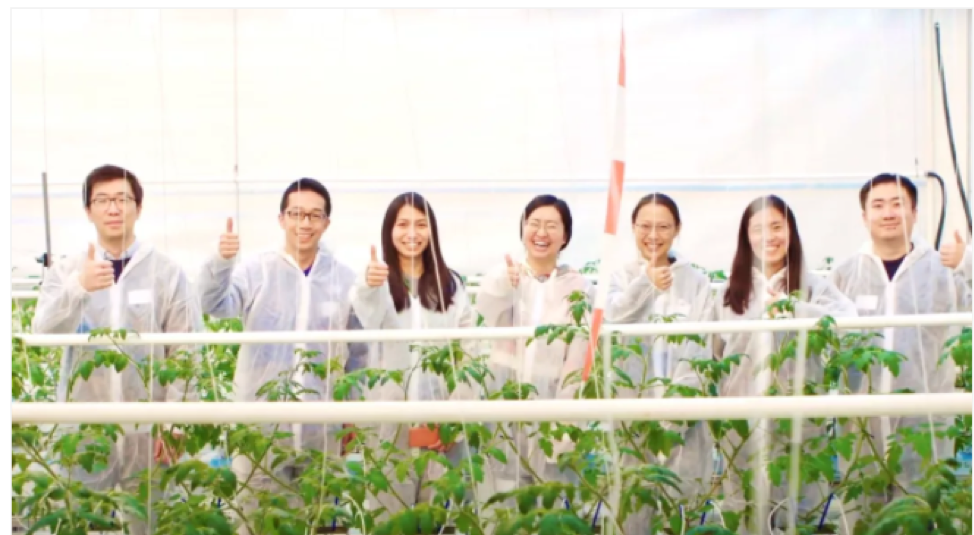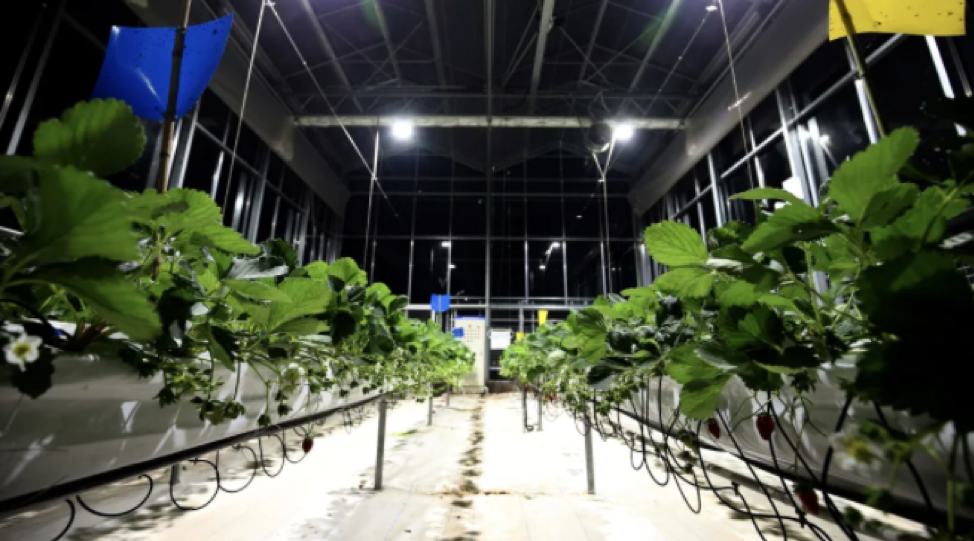
Algorithm-Enabled Strawberry Planting Provides New Future for Agriculture
Want to read in a language you're more familiar with? Please click the pink icon below for one-click AIPlease click the pink icon top right for one-click AI translation
With the top farmers from leading strawberry counties as the control groups, final resulting strawberries will be evaluated in terms of yield, taste and cost of strawberries.
Digital planning for farmers
More than two months ago, engineer Cheng Biao participated in the Chinese e-commerce platform Pinduoduo’s Duoduo Smart Agriculture Competition, a competition between humans and computers to plant strawberries on plateaus which requires the participating teams to control the growth of strawberries using AI algorithms within 120 days.
With the Food and Agriculture Organization of the United Nations serving as its technical advisor, the competition is jointly held by China Agricultural University and Pinduoduo, attracting young scientists and top farmers in the world to participate in this human against computer strawberry planting competition between four AI teams and four top-farmer teams.
With the top farmers from leading strawberry counties as the control groups, final resulting strawberries will be evaluated in terms of yield, taste and cost of strawberries.
SEE ALSO: “AI Strawberries” Are Just the Beginning for Remaking Agriculture
The process is unpredictable.
In the 6th week, Cheng saw the AI teams have better strawberry growing conditions than the traditional teams, “about one week to 10 days ahead.”
Cheng said this meant that if his strawberries go to market one week earlier than others, he would have lower pricing for the week.
This preliminarily result proves that AI algorithms have game-changing potential.
The competition is halfway over. According to the data from the expert team of Yunnan Academy of Agricultural Sciences, which provides technical support, AI teams delivered the number of fruits in the harvest period over 175% higher than traditional teams on average.
Among AI teams, the Zhi Duo Mei team, of which Cheng is a member, is lagging behind the AiCU team in certain indicators.
The Zhi Duo Mei team is composed of 11 experts from the Institute of Automation, Chinese Academy of Sciences, Kunming Academy of Agricultural Sciences and other institutes, while the AiCU team consists of 7 doctorates and postdocs from Wageningen University & Research and the University of Amsterdam, with their majors covering greenhouse horticulture models, electronic engineering, machine learning and math.
Due to COVID-19, the AiCU team participated in the competition in the Netherlands in a remote manner, practicing the scenario of farming in front of computer screens.
In their greenhouses, AI teams have equipment to read environment parameters in real time including temperature and light, as well as delivering automatic controls.
For the existing performance gap, Cheng said it cannot be filled within one or two years as the AiCU team is stronger in planting models and data acquisition.

However, Cheng saw the reliability of overseas remote planting: a big opportunity to change agricultural production at the source, and the starting line of combining small farmers to realize large-scale and standard agricultural production.
He immediately set up a commercial company, aiming to provide AI algorithm solutions to help farmers reduce water and fertilizer consumption and improve yield.
Soon after, Cheng had 200 mu, equivalent to 13.3 hectares, of farmland to serve.
“One partnership was negotiated on the morning of Sept. 20, and the land was identified that afternoon. Now we are installing equipment on that land.”
Cheng has strongly felt the small farmers’ desire for digital planting services in Yunnan.
AI technologies applied in the fields
Similar to Cheng, participating teams all have formed their own views about the future of agriculture.
Surprises can be seen during the competition. According to Researcher Ruan Jiwei from Yunnan Academy of Agricultural Sciences, participating teams have pushed the strawberry harvest period in Yunnan over 60 days earlier.
“When strawberries are to be planted in the Middle-Lower Yangtze region, the first round of strawberry harvest in the competition has completed, which can address the supply shortage of fresh strawberries in summer and autumn in Yunnan.”
“We are confident in field management at the beginning,” Sun Yuqing from the top-farmer team said. “For example, we can deliver timely watering, fertilizing and pest control, and even manage each individual strawberry plant.”
But over the past two months, they have become keenly aware of the importance of digital agriculture. When the top-farmer team is watering and fertilizing in the fields, the AI team only needs to adjust the model and feedback parameters, then the ventilation windows and the fertilizing system respond automatically.
Actually, this sentiment points to another question. He Dongjian, Director of IoT in Agriculture Key Lab affiliated with the Ministry of Agriculture and Rural Affairs, and Professor of Northwest A&F University, thought protected agriculture is only part of the broader agriculture, and food security is potentially a more significant issue.
As urbanization pushes forward, who will do the farming in the future?
He observed that “existing farmers were born in the 1950s and 1960s, a few in the 1970s, and few in the 2000s.”
It is an irreversible trend that fewer and fewer people are engaging in agriculture. He said he thinks smart agriculture provides a solution, “I have said that 10 years later, there will be unmanned farmland, unmanned meadows and high-end plant factories.”
Even top farmer Ji Rongxi from Jiangsu Province also holds the same view as He. In his greenhouse in Zhenjiang, Ji installed devices to supply light and increase temperature, temperature and humidity sensors, and an integrated water and fertilizer system. “I will retire from strawberry farming when I am 60 years old. In the future, who will farm and how will they do it? It is an urgent issue.”
During the competition, Ji is using his secret oil residue recipe for base fertilizer. “It can be the best thing if AI can learn the experiences over decades of planting practices,” he said.
Currently, the majority of agricultural operation entities are small farmers in China. Translating new equipment and techniques into higher return on investment and making them available to small farmers are major challenges faced by every practitioner.
“If you cannot produce quality products, it’s no use pursuing high yield, efficiency, quality and price,” said doctoral supervisor He Dongxian, also a professor at the College of Water Resources & Civil Engineering of China Agricultural University.
The overall result of AI teams can be summarized as “one-click planting”

For example, the CyberFarmer.HortiGraph team developed a repeatable, replicable and reproducible cloud system through standardization and digitalization of the strawberry planting process.
Team leader Lin Sen said, “a farmer was able to see the planting data with just one interface and plant strawberries according to our process based on rich experience even if he was ignorant of such a technique.”
However, in real scenarios, the application of such an “interface” is not easy. Minqian Xixi with the AiCU team used the Netherlands as an example.
The Netherlands, typically cloudy and geographically twice the size as Beijing, is only second to the US in terms of agricultural exports. One big reason is that the country has made great efforts in agricultural digitalization based on its glass houses.
Digital farming can collect data for management and develop real-time peer comparisons between workers for performance appraisals. For farmers, this means easy work with more benefits.
Li Daoliang, a member of the competition jury and professor at the College of Information and Electrical Engineering of China Agricultural University, believes that new farmers are totally different from the last generation, and new modes of production will transform the industry.
“For example, in this strawberry challenge, competitors were required to explore the laws of growing strawberries with an intelligent system for machine learning and explore using recognition, learning, decision and work intelligence in the system. This is also the core of agriculture in the future.”
More surprises to come
It is worth mentioning that there are nearly 20 kinds of phased achievements in the competition, including image recognition, collision algorithm and multi-layer neural network.

Lanke, the leader of the competition’s organizing committee, believed that a “smart plug-in” was expected to be developed for strawberry growers in China. With it, an optimal planting pattern can be applied in other regions with just one click. It can help farmers grow and sell strawberries.
When people worry that no one will do farm work as fewer and fewer people do so, young scientists are drawing youth back to the more tech-savvy industry in their own ways.
The second half of the competition will definitely see more surprises in the next two months given the success in the first half.





